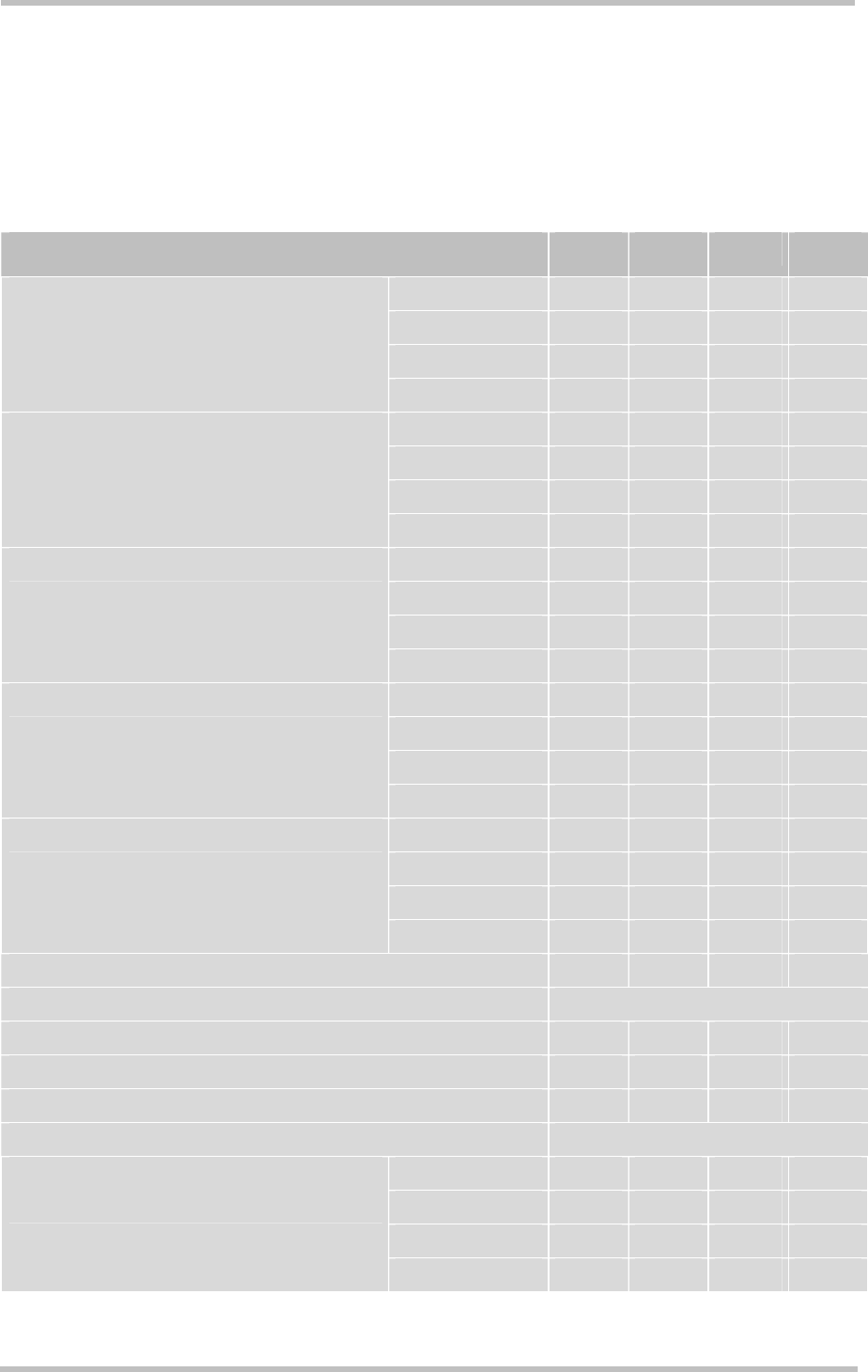User's Manual
Table Of Contents
- Document history
- Introduction
- Product concept
- Application Interface
- Antenna interface
- Electrical, reliability and radio characteristics
- Mechanics
- Reference Approval
- Design example
- List of parts and accessories

MC55/56 Hardware Interface Description
Confidential / Preliminary
s
MC55/56_hd_v03.00 Page 90 of 104 16.08.2005
5.6 Air interface
Test conditions: All measurements have been performed at T
amb
= 25°C, V
BATT+ nom
= 4.1V.
The reference points used on MC55/56 are the BATT+ and GND contacts (test points are
shown in Figure 39).
Table 32: Air Interface
Parameter Min Typ Max Unit
GSM 850
3)
824 849 MHz
E-GSM 900
4)
880 915 MHz
GSM 1800 1710 1785 MHz
Frequency range
Uplink (MS → BTS)
GSM 1900 1850 1910 MHz
GSM 850
3)
869 894 MHz
E-GSM 900
4)
925 960 MHz
GSM 1800 1805 1880 MHz
Frequency range
Downlink (BTS → MS)
GSM 1900 1930 1990 MHz
GSM 850
3)
31 33 35 dBm
E-GSM 900
4) 1)
31 33 35 dBm
GSM 1800
2)
28 30 32 dBm
RF power @ ARP with 50 load
GSM 1900 28 30 32 dBm
GSM 850
3)
124
E-GSM 900
4)
174
GSM 1800 374
Number of carriers
GSM 1900 299
GSM 850
3)
45 MHz
E-GSM 900
4)
45 MHz
GSM 1800 95 MHz
Duplex spacing
GSM 1900 80 MHz
Carrier spacing 200 kHz
Multiplex, Duplex TDMA / FDMA, FDD
Time slots per TDMA frame 8
Frame duration 4.615 ms
Time slot duration 577 µs
Modulation GMSK
GSM 850
3)
-102 -107 dBm
E-GSM 900
4)
-102 -107 dBm
GSM 1800 -102 -106 dBm
Receiver input sensitivity @ ARP
BER Class II < 2.4% (static input level)
GSM 1900 -102 -105.5 dBm
1)
Power control level PCL 5
2)
Power control level PCL 0
3)
MC56 only
4)
MC55 only










